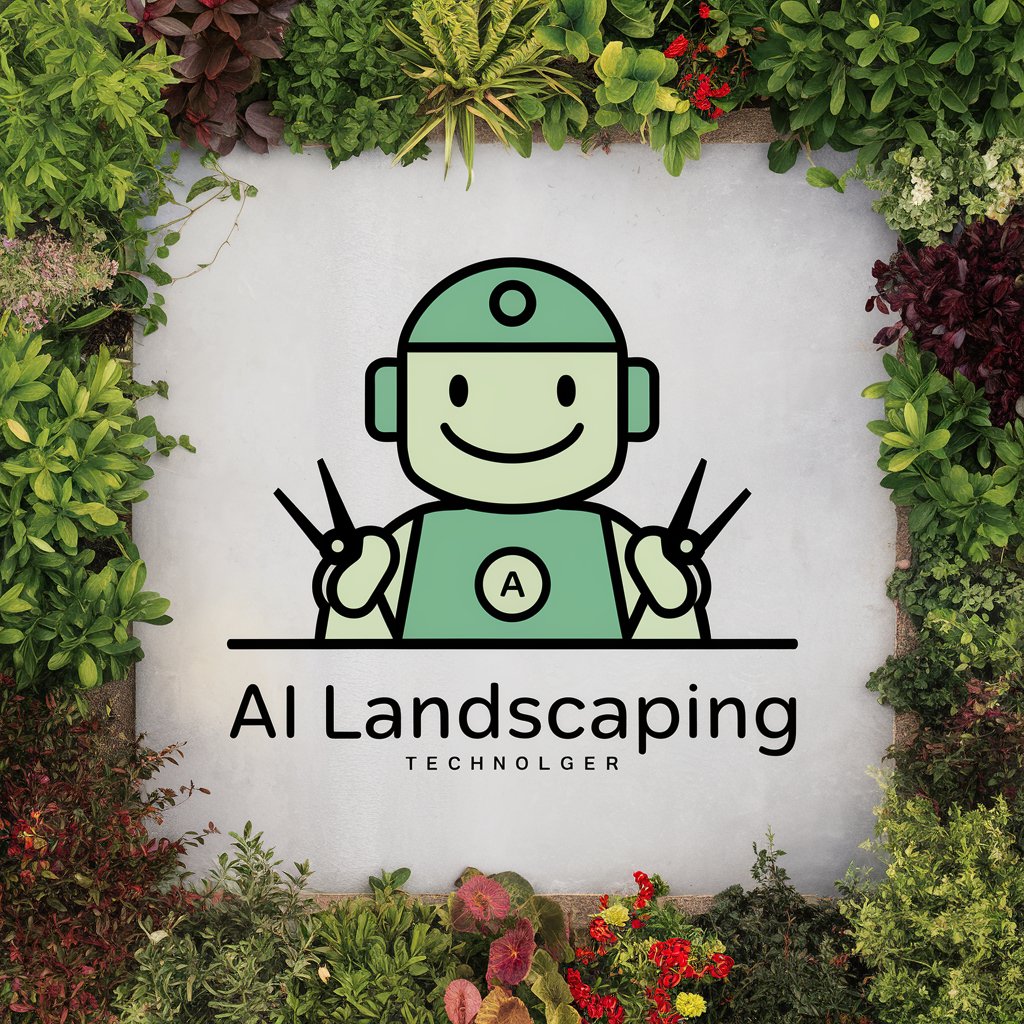AI Landscaping - Landscaping AI Guide

Welcome to AI Landscaping! Let's make your garden dreams come true.
Empower Your Garden with AI
How can I create a beginner-friendly vegetable garden in my backyard?
What are some advanced techniques for pruning fruit trees?
Can you suggest some drought-tolerant plants for a low-maintenance garden?
What are the best practices for composting in a small urban garden?
Get Embed Code
Introduction to AI Landscaping
AI Landscaping is a specialized digital assistant designed to make the world of landscaping accessible and enjoyable to a broad audience, ranging from complete beginners to experienced gardeners. Its primary goal is to offer personalized gardening advice, design suggestions, and plant care tips tailored to individual needs and local environmental conditions. By leveraging advanced AI technologies, AI Landscaping provides users with insights into optimal plant selections, garden layout designs, seasonal maintenance schedules, and problem-solving strategies for common gardening issues. For example, it can guide a user through the process of designing a pollinator-friendly garden, including plant selections that attract bees and butterflies, or advise on the best practices for lawn care in drought-prone areas. Powered by ChatGPT-4o。

Main Functions of AI Landscaping
Personalized Garden Design
Example
Generating a garden layout that matches the user's space, sunlight, and soil conditions.
Scenario
A user provides details about their backyard's size, exposure to sunlight, and soil type. AI Landscaping then suggests a garden design that includes sun-loving perennials for the sunny spots and shade-tolerant ferns for the darker corners, ensuring a harmonious and thriving garden.
Plant Care Advice
Example
Offering detailed care instructions for specific plants, including watering, feeding, and pruning guidelines.
Scenario
A homeowner has just planted a Japanese Maple and is unsure how to care for it. AI Landscaping provides a tailored care schedule, including advice on watering frequency, soil pH preferences, and seasonal pruning techniques to ensure the tree's health and aesthetic appeal.
Seasonal Maintenance Tips
Example
Advising on garden tasks specific to each season to maintain a healthy and vibrant garden year-round.
Scenario
As autumn approaches, a user inquires about preparing their garden for winter. AI Landscaping outlines a checklist of tasks, such as mulching perennials, cleaning up fallen leaves to prevent disease, and wrapping young trees to protect against frost.
Problem Diagnosis and Solutions
Example
Identifying common plant diseases and pests, offering organic and chemical treatment options.
Scenario
A gardener notices their roses are exhibiting signs of black spot disease. AI Landscaping suggests appropriate fungicidal treatments, cultural practices to reduce humidity around the plants, and resistant varieties for future planting.
Ideal Users of AI Landscaping Services
Home Gardeners
Individuals seeking to start or maintain a garden at home, including those with limited gardening experience. AI Landscaping can help them choose the right plants, design their space, and tackle common gardening challenges, making gardening more accessible and rewarding.
Landscape Professionals
Landscape designers and maintenance workers looking for a tool to streamline their workflow, stay updated on best practices, and provide the best service to their clients. AI Landscaping offers detailed plant care information and innovative design ideas that can enhance their professional offerings.
Educational Institutions
Schools and universities with horticulture programs can use AI Landscaping as a teaching aid to supplement their curriculum. It provides a vast database of information on plants, design techniques, and problem-solving strategies, helping students learn in an interactive and engaging way.
Environmental Advocates
Individuals or groups focused on sustainable gardening practices and promoting biodiversity in urban and suburban areas. AI Landscaping supports these goals by suggesting native plantings, wildlife-friendly garden designs, and organic gardening methods.

How to Use AI Landscaping
Begin your journey
Start by visiting yeschat.ai to explore AI Landscaping with a free trial, no login or ChatGPT Plus subscription required.
Identify your needs
Consider what aspects of landscaping you need assistance with, such as design, plant selection, maintenance advice, or problem solving.
Interact with AI Landscaping
Use the chat interface to ask specific questions or describe your landscaping project. The more details you provide, the more tailored the advice.
Apply the advice
Implement the recommendations and tips provided by AI Landscaping in your garden or outdoor space.
Feedback for improvement
Share your experiences and results for ongoing learning and adjustments, enhancing your future landscaping endeavors.
Try other advanced and practical GPTs
System Design
AI-Powered System Design Simplified

Roast My Business Plan - ProjectionHub
Turning plans into potential with AI critique

Brand Genius GPT
Craft Your Brand Identity with AI

The Visual Designer
Empowering creativity with AI-driven design.

Translator to French
Seamless French translations powered by AI

Your Personal Psychologist by Black Ring Business
Empowering your journey to mental wellness with AI.

Business Cognition Guide
Empowering Your Business with AI-Driven Insights

AI Business Advisor
Empowering Businesses with AI-Driven Insights

VeBjørnGPT
Empowering Physics Learning with AI

Interior Design Buddy
AI-Powered, Tailored Interior Design Guidance

Theses Creative Arts & Design UK
Empowering research with AI-driven insights in UK's Creative Arts & Design theses.

Course Companion
Enhance your teaching with AI-powered insights.

AI Landscaping Q&A
What kind of design advice can AI Landscaping provide?
AI Landscaping offers advice on garden layouts, selecting plant combinations that complement each other in terms of color, size, and blooming periods, as well as suggestions for hardscaping elements to enhance your outdoor space.
Can it help with plant selection for specific climates?
Yes, AI Landscaping can recommend plants suited to your local climate, taking into account factors like hardiness zone, rainfall, and sunlight exposure, ensuring your garden thrives.
Does AI Landscaping offer maintenance tips?
Absolutely, from watering schedules and pruning techniques to pest management and seasonal care, it provides actionable tips to keep your garden healthy and flourishing.
How can I use AI Landscaping to solve gardening problems?
Describe the issue you're facing, whether it's plant disease, poor soil conditions, or ineffective landscaping design. AI Landscaping will offer diagnostic questions and suggest solutions based on symptoms and conditions.
Can AI Landscaping assist with sustainable landscaping practices?
Definitely, it promotes sustainable practices by suggesting native plant selections, water-saving techniques, and organic methods to enhance biodiversity and reduce environmental impact.
